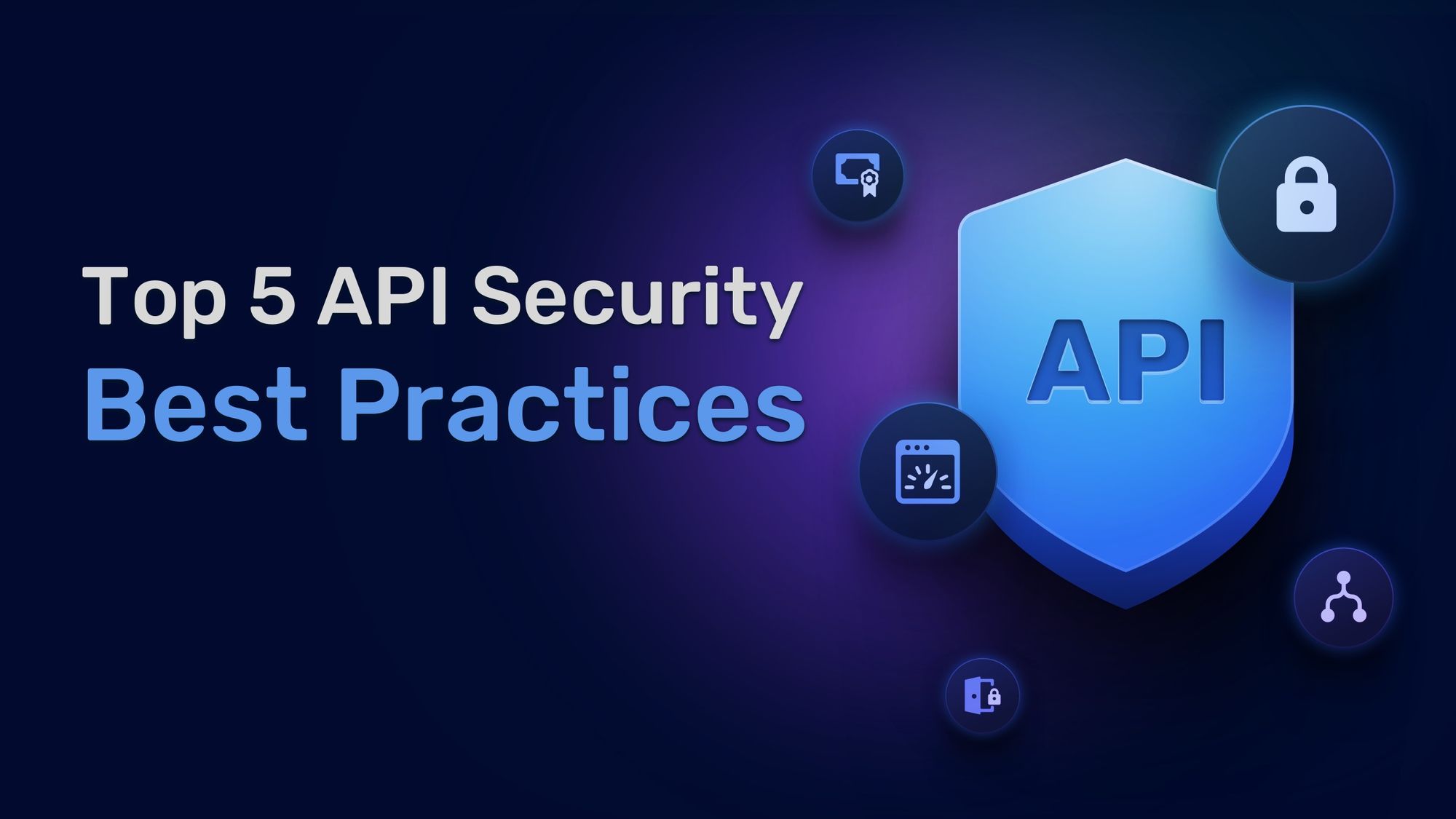Top 5 API Security Best Practices for Protection, Resilience, Reliability and Scalability

Time and time again, siloed security solutions have shown their limitations and vulnerabilities. Today’s modern infrastructures require unified cloud native solutions that bridge security gaps, enable faster deployments, and create more reliable and economically scalable infrastructure.
Here are five top API security best practices for effective management and security. While each can be deployed independently to optimize microservices, the most effective approach is to combine them, to take advantage of a whole solution working together that is greater than the sum of its parts.
APIs are growing rapidly — as are their risks.
If you are considering, or have already deployed APIs to connect different applications and services, you know how important it is to protect them from malicious actors. According to Gartner, unmanaged and unsecured APIs create vulnerabilities that can accelerate security incidents. They predict that by 2025, less than 50% will be managed if the explosive growth in APIs surpasses management tool capabilities.
API security has multiple functions for distributed systems. These include protecting applications and data, providing reliable and consistent operations, and enabling applications that scale to meet an organization’s requirements.
This rapid growth has increased the need for centralized security controls with integrated and automated traffic load balancing, authentication and authorization, encryption, and DoS protection. Here are the top best practice tips to help guide your next steps to maximize API benefits, while mitigating risk.
#1: Maintain load balancing
Load balancing ensures network and system uptime, reliability, and resilience, while enabling dynamic scaling. If an application, server or network fails, the service operations will continue handling requests, and applications will continue running smoothly and safely.
Be sure to implement redundancy within each layer of the stack, to load balance traffic in both the API gateway and the backend application. Powerful networking solutions provide multiple layers of load balancing traffic across two or more copies, routing requests to healthy instances to evenly distribute traffic. Additionally, you can load balance your API gateway itself, to distribute the load among multiple TE instances.
#2: Control access to your APIs with authentication and authorization
Ensure users are who they say they are, and that they are only allowed to access approved systems. Common authentication and authorization protocols include LDAP, JWT, OAuth2, OpenID Connect, HMAC, amongst others.
It’s a good idea to centralize and automate authentication and authorization protocols at the ingress, to unburden individual applications from handling the protocols. By abstracting these functions at a higher layer plane, your networking solution should eliminate protocol implementation errors and free developers to focus on application features and capabilities. This will also create a standard security process for development, networking, and security teams.
#3: Protect your data with encryption and TLS/SSL certificates
Protecting data traversing across the network using HTTPS encryption and certificates is the best way to keep bad actors from getting to your data. Automating encryption and certificate management eliminates risk associated with manual errors. Automatically generating a dynamic certificate produces a private key, submits it to a CA, and waits for the verification and signing process to complete. Robust API gateways also support a variety of industry-standard integrations for TLS certificate management, like HashiCorp Vault or ACME providers like Let’s Encrypt.
#4: Don’t forget rate limiting
This practice helps ensure applications are secure and resilient, while treating users fairly. Rate limiting controls the flow and distribution of internet traffic, so your infrastructure never becomes overloaded. Without rate limiting, traffic can become congested, causing applications to run slow and even fail.
By matching traffic flows to your infrastructure’s capacity, rate limiting protects APIs from receiving too many calls. By placing limits on how often an API can be called and throttling connections, you can protect against traffic spikes and DDoS attacks.
Rate limiting has two parameters that need to be considered. The number of requests received by the proxy, and the absolute number of requests held by the middleware.
#5: Maintain solid access logs
A detailed audit log is important for post-incident investigation. Audit logs monitor data, while tracking potential information misuse and cybersecurity breaches to reduce risk, comply with regulations, gain insights into potentially malicious activity, and achieve operational efficiency. They are helpful to promote ongoing monitoring and incident response, as they include detailed information that helps understand who is accessing which endpoints when, which is hugely beneficial for understanding consumption trends and proactively detecting malicious behavior. In the event of any sort of security incidents, these logs are similarly helpful in postmortem analysis as well as auditing.
A Holistic Approach for Secure API Management
As the number of APIs increase it becomes more important to automate and centralize. Development teams should be empowered to focus on what they do best, rather than getting bogged down in the minutiae of working with these different components.
The application of these best practices will help keep your distributed systems secure, resilient, reliable and scalable. Managing API security for distributed systems requires a broad view into an expanding enterprise perimeter. By securing APIs, you can reliably protect the entire application service chain, as requests are routed from one service to another.
Each of these best practice tips are supported and brought together by Traefik Enterprise, a unified cloud-native networking solution that brings API management, ingress control, and service mesh together within a single control plane. Traefik Enterprise provides multi-layered load balancing across hybrid and multi-cloud environments. It includes authentication and authorization middlewares, TLS certificate management, rate limiting middlewares, and access logs. Traefik Enterprise’s cloud native dynamic and elastic scalability supports legacy, cloud native and hybrid application deployments to help organizations migrate microservices progressively and safely. Learn more about how we can help secure your APIs with Traefik Enterprise.



